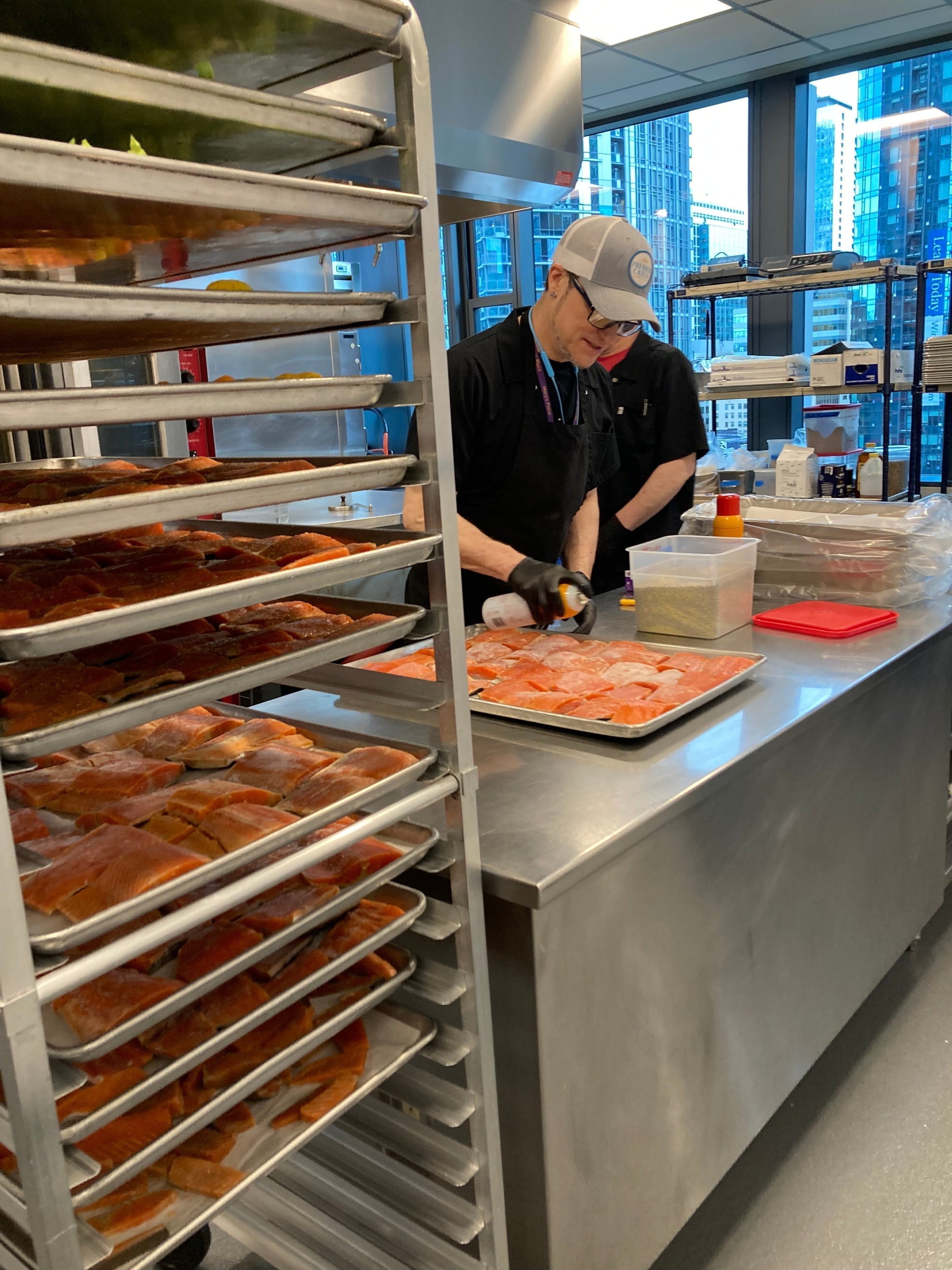Salmon are a crucial player in our underwater ecosystems, especially in the Pacific Northwest. From the ocean, to forests, and mountain streams, salmon are vital to maintaining the health of these coastal communities.
As Premier Catch customers, you understand that it is hard to imagine our life and diet without salmon. Salmon is a widely enjoyed food source across the world and it is especially important in the diet of indigenous coastal communities who have fished salmon for thousands of years. In addition to humans, over 130 animal species, including the Orca whale and the Grizzly Bear, also enjoy salmon and the same nutritional benefits of the protein and nutrients in the fish as we do. Without salmon, these populations would be without a major food source and thus, at risk.
Salmon Life Cycles:
Of the seven species of salmon that live in the Pacific Ocean, five of these species live and breed in North American waters. These five species include Chinook, Coho, Chum, Sockeye, and Pink salmon. Although these species vary in size and flavor, a key component of their lifecycle depends on the connectivity between oceans and rivers.
While most of their food and nutrients are found in the ocean and salmon spend most of their lives there, they are an anadromous fish. They swim and breed upstream in rivers where their eggs are protected from predators. So despite the challenge of swimming upstream, against rapids and strong currents, salmon swim hundreds of miles upstream each year to spawn.
Female salmon find riffles, where the water is shallow but fast, to nest and lay their eggs. Their nests are called redds, which the salmon uses her tail to create a small pocket of gravel. The gravel must be coarse with a diameter up to 4 inches to protect the eggs while allowing oxygen and water to reach them.
This spawning process is so taxing that female salmon typically die within a week of laying their eggs and they only spawn once in their lifetime.
After the female dies, the local flora and fauna of the upstream river breaches benefit from the nutrients they receive from the ocean and the salmon aids the diverse ecosystems that exist along the coasts.
Successful Spawning Habitats:
The success of salmon spawning depends on their natural habitat and several important factors which humans play a large role in.
Young salmon form a biological connection with the chemical makeup of the river water where they were born. Many salmon return years later to spawn in the same river which they came from and they use the chemical makeup to navigate back to their native river.
Egg development of salmon is highly reliant on the temperature of the river water in which they are laid. They develop faster in warmer water, slower in cooler water, and the salmon time their migration with these temperature changes.
River gravel is created by the erosion of bedrock in the river’s headwaters. During extreme rainfall, the gravel is then delivered to rivers and streams and during floods, the river carries the gravel downstream where it falls to the river bed during low flows.
Supporting Sustainable Seafood
As consumers, ensuring that we are supporting brands and retailers that source sustainable seafood is one of the easiest things we can do.
Sustainable seafood agencies, such as MSC, and regulators, such as the state of Alaska, ensure that the salmon populations remain replenished and protect their ecosystems so that they will be abundant for generations to come.
This is why, at Premier Catch, we exclusively source seafood from Alaska which is certified by RFM and MSC for setting the gold standard for sustainability. You can read more about Alaska’s sustainability efforts here.
If you have any questions or comments, please reach out by email info@premiercatch.com and follow along in social media @premiercatch for more sustainability and nutrition information!
Thank you for eating wild and supporting sustainability!


